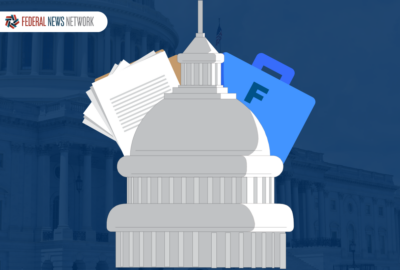Insight by Tata Consultancy Services
Demystifying AI for the public sector
Government agencies are understandably hesitant about artificial intelligence. But with the right partners, AI can revolutionize government services.
Government agencies largely look to the private sector to lead the way on artificial intelligence, and help them figure out what the art of the possible is. But there’s a major difference between public and private sector applications for AI: In the private sector, a mistake can mean loss of profit and unsatisfied customers. In the public sector, it can mean disruptions of critical services, and in some cases, life or death. Because of this, government agencies are notably more hesitant and cautious in their approach to AI.
But Mohammed Jalaluddin, labor and workforce technology director for Tata Consultancy Services (TCS), said there’s also some obscurity around just what AI can do for government agencies. The big use cases everyone is chasing, especially within generative AI (GenAI), are chat bots and customer-facing applications. But while customer-facing AI tools can certainly help government agencies accomplish their missions more efficiently, they also come with a higher risk factor. Jalaluddin said other applications exist that may be lower-hanging fruit for agencies to dip their toes into the AI pool.
“I would recommend that government start off looking at internal processes, internal IT structure, and see how and where GenAI can be deployed and implemented from a small- scale perspective. You don’t have to go large,” he said. “Agencies need to set expectations by clearly understanding the reality of GenAI by experiencing it in a real life, low-risk project.”
As a back-office assistant, generative AI can automate repetitive and time-consuming tasks involving document processing, scanning, and validation against large policy documents, help summarizing and analyzing bulky policy and contract documents for better decision-making, generate financial reports on time and also draft creative content such as official correspondence and speeches, according to Shalini Mehtani, head of industry offerings for the AI.Cloud unit at TCS.
Challenges of AI
But there are challenges to surmount first. Agencies need to get a handle on the ethics and bias questions around AI, implementing guardrails to minimize potential harm, and ensuring there’s always a human in the loop on AI-assisted processes. They also need to acquire the infrastructure to handle AI, which most agencies don’t have, such as cloud infrastructure, subscriptions to large language models, interface tools for communication, data storage and management.
But both of those challenges lead back to the largest challenge of all: Agencies have to get a handle on their data. Jalaluddin said the common perception of government data being largely unclean and unstructured is probably not accurate; if it were, government couldn’t accurately accomplish many of its functions. The real challenge, he said, is that it’s disorganized. Agencies need to determine the system of record, the one source of truth. They also must organize their data and securely share information among the multiple agencies in a single state.
“Agencies do have clean data. They couldn’t issue people driver’s licenses without having clean data,” Jalaluddin said. “It’s going to take some time for government agencies to organize the data, understand the data, and then determine how to use it. But that should not deter them from moving forward with technology transformation that involves AI.”
And state CIOs are aware of the need to organize their data; a recent report from the National Association of State Chief Information Officers found 89% of state CIOs consider data quality to be of high importance, but only 22% said they have a data management program in place.
“When we talk about the AI journey, I think one of the very important parameters is the data part of it, which I think there has been a lot of talk about because governments are public organizations, they have the biggest datasets available to them,” Mehtani said. “Governance and management of that data is critical. At the same time, there is lot we can do with that data. Right now we see a lot of opportunities with government itself as well as enterprises who can consume this data for a large number of use cases which could leverage AI or GenAI.”
AI to augment, not replace
Agencies can use some of that data, specifically the data they collect on their citizens, to improve citizen services through hyper-personalized experiences. They can use demographic and other data on citizens to compartmentalize and contextualize specifically relevant government information, such as changes in laws that may affect certain citizens. By notifying and explaining these changes to citizens that are affected, GenAI can reduce the burden on agency customer service representatives, allowing those employees to be more productive and enabling better experiences.
And that’s an important distinction: GenAI won’t replace employees, only augment their efforts and reduce their burden. TCS found in its recent “AI for Business” study that two-thirds of executives believe that human staff is still necessary to do the creative and critical thinking.
Copyright © 2025 Federal News Network. All rights reserved. This website is not intended for users located within the European Economic Area.





